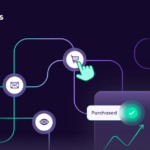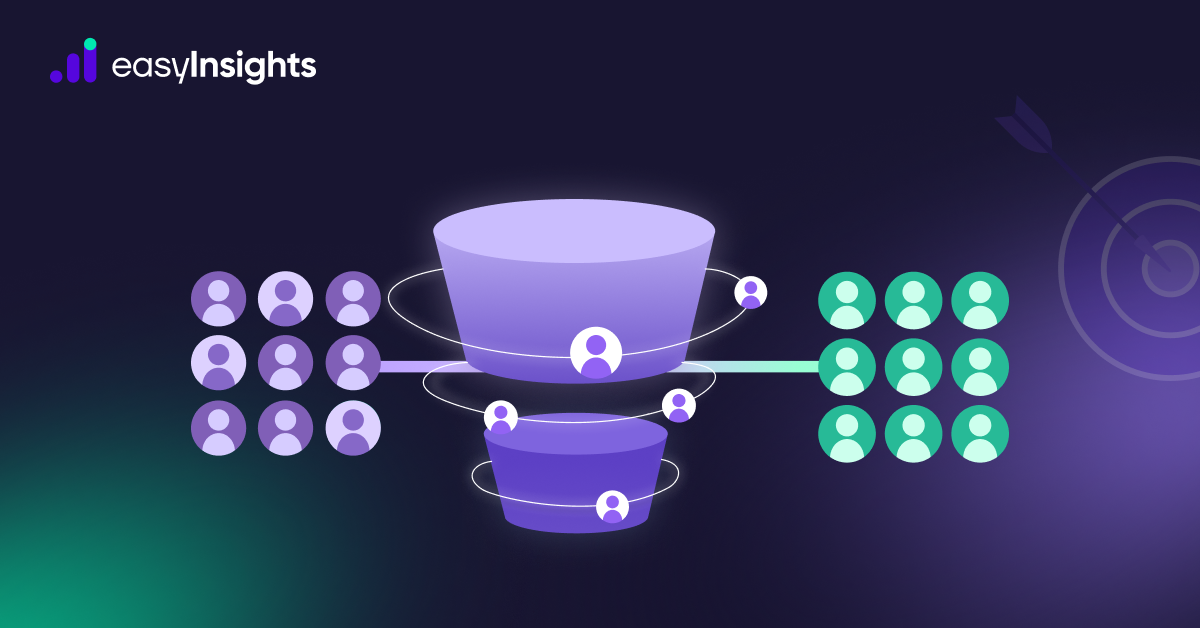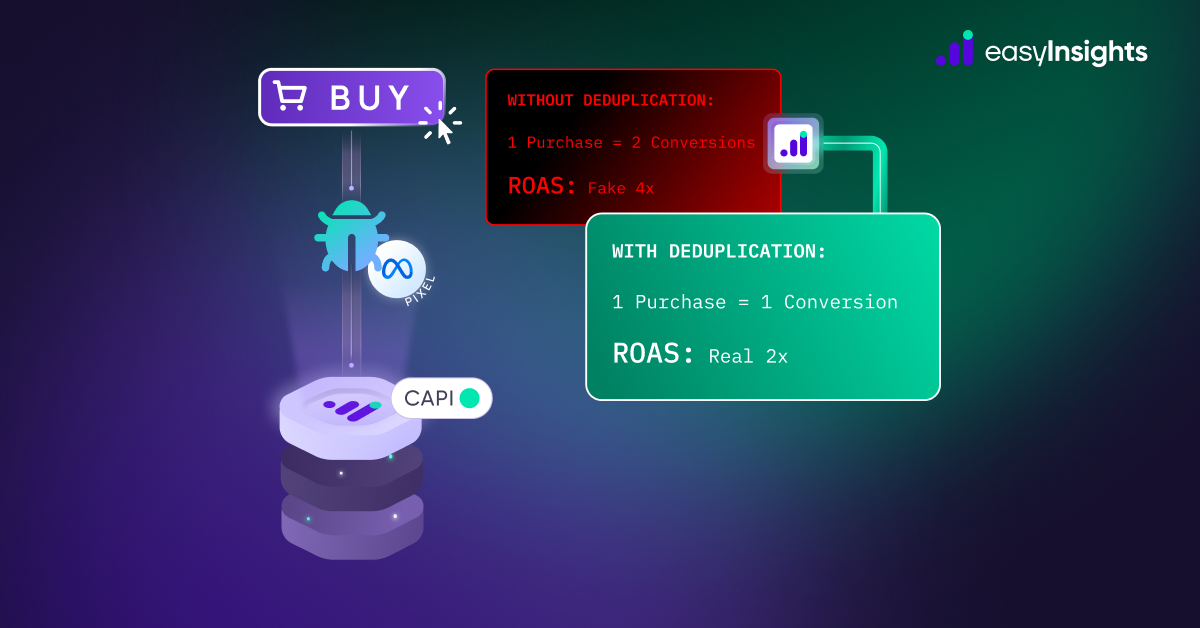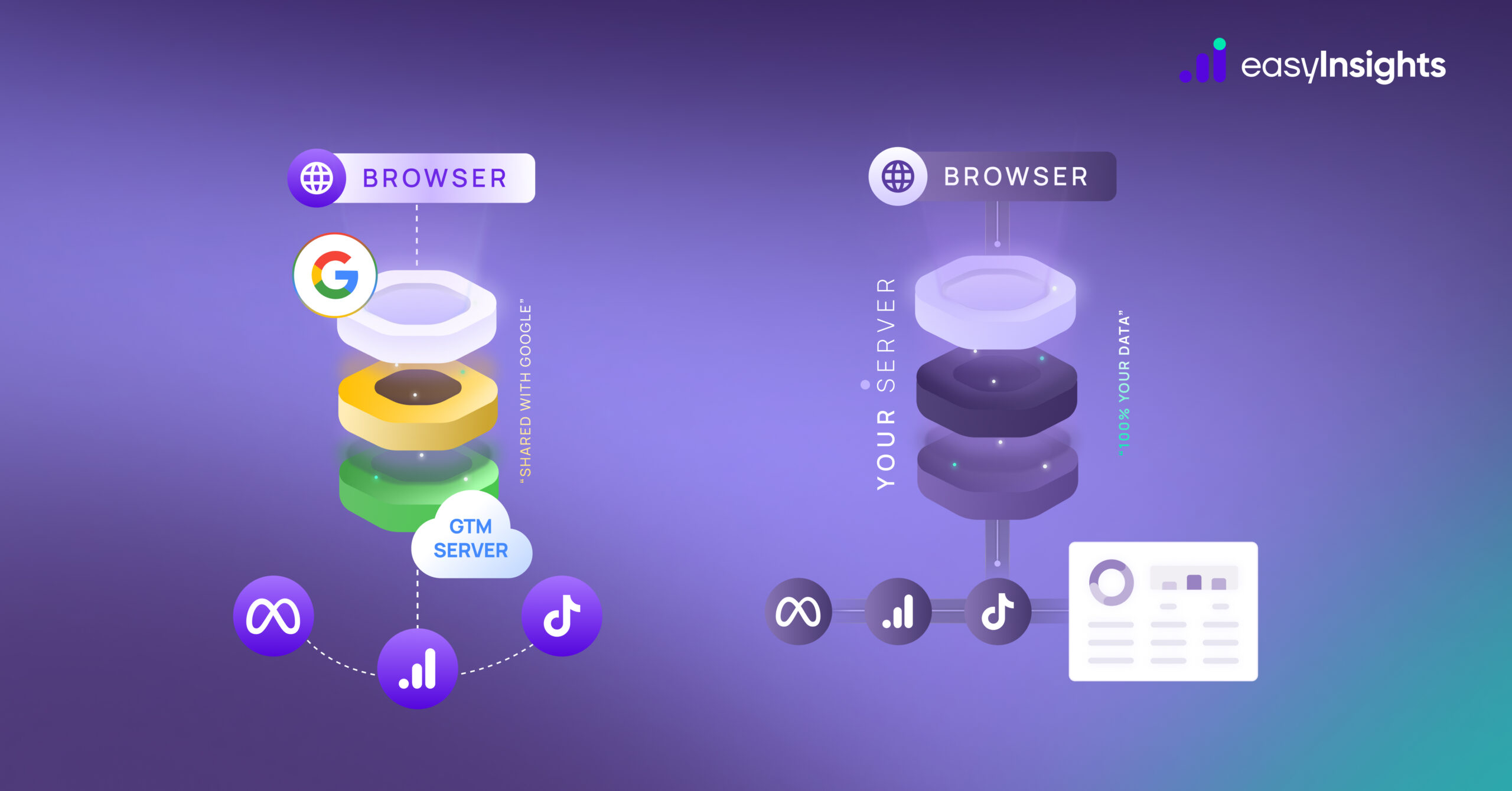
Imagine you order your favorite drink on the Starbucks app, pay online, and simply pick it up at your nearest store without waiting in line. Or you browse Nike’s website, add items to your cart, and then try them on in-store before purchasing. This smooth back-and-forth between online and offline isn’t a coincidence – it’s called omnichannel marketing.
In simple terms, omnichannel marketing means creating a connected and consistent experience for customers across every channel – websites, apps, social media, emails, and physical stores. Whether your customer is scrolling on their phone or visiting your shop, they get the same seamless experience.
It’s becoming essential for brands today because customers expect convenience and consistency. Brands that offer a unified journey across all touchpoints build stronger relationships, boost sales, and stand out in a crowded market. In this topic, we’ll dive into how omnichannel marketing works, why it matters, and how brands can make the most of it.
Jump ahead to:
What is Omnichannel Marketing
Omnichannel marketing simply means giving customers a connected experience across every place they interact with your brand – whether that’s your website, mobile app, email, social media, or physical store. All these touchpoints work together so the customer feels like they’re dealing with one brand, not a bunch of separate channels.
How it’s different from multichannel marketing:
- Multichannel means being present on multiple channels (website, Instagram, stores, etc.), but each channel works on its own.
- Omnichannel goes a step further – it connects those channels so a customer can switch between them without any friction.
Examples of omnichannel experiences:
- A shopper adds an item to their online cart and later gets a reminder about it in the store or via email.
- A customer checks product availability in an app, then picks it up in a nearby store with the same discounts and loyalty points.
- A brand uses your purchase history across all channels to offer personalized recommendations wherever you shop.
In short, omnichannel marketing is about making every interaction feel seamless, no matter where it happens.
Why Omnichannel Marketing Matters
Omnichannel marketing isn’t just a buzzword – it’s the key to keeping today’s customers happy and loyal.
Here’s why it matters:
- Enhances customer experience:
Customers can move smoothly between your website, app, and store without starting over. This convenience makes their shopping experience faster and more enjoyable. - Increases customer loyalty and retention:
When customers feel recognized and valued across every touchpoint, they’re more likely to come back and stick with your brand. - Improves marketing ROI and sales:
A unified approach means your ads, emails, and in-store offers work together. This leads to better targeting, less wasted spend, and more sales. - Builds a consistent brand identity:
Consistent messaging across channels – from Instagram posts to store displays – strengthens your brand image and makes it more memorable.
In short, omnichannel marketing helps brands turn one-time buyers into long-term fans while boosting the bottom line.
Key Elements of Omnichannel Marketing
To build a true omnichannel experience, brands need a few core ingredients working together:
- Unified customer data:
Collect and combine customer information from every touchpoint – website, app, email, and store visits – so you get a full picture of each person. This allows for better personalization and smarter decisions. - Consistent brand messaging:
Whether it’s a social media ad, an email, or an in-store display, your tone, visuals, and offers should feel the same everywhere. This consistency builds trust and recognition. - Seamless online-to-offline experiences:
Make it easy for customers to move between channels – like checking stock online before picking up in-store, or returning online purchases at a physical location. The goal is zero friction. - Use of technology (CRM, analytics, automation):
Tools like customer relationship management systems, marketing automation help track interactions, deliver personalized messages, and measure performance across channels.
Together, these elements create a smooth, connected journey that keeps customers engaged and loyal.
Benefits of Implementing Omnichannel Marketing
Putting an omnichannel strategy into action gives businesses a big edge. Here’s how it helps:
- Personalized communication:
With connected data from all channels, you can send offers, updates, and messages that actually match each customer’s interests and buying habits. - Higher engagement across touchpoints:
When people experience a smooth journey – from ads to website to store – they’re more likely to interact, explore, and buy. - Better attribution and performance measurement:
Because everything is connected, it’s easier to see which campaigns or touchpoints drive sales and which need improvement. - Competitive advantage:
Most brands still treat their channels separately. Offering a seamless, integrated experience helps you stand out, win customer loyalty, and boost your market share.
In short, omnichannel marketing helps you understand your customers better, reach them more effectively, and grow faster than competitors.
Steps to Create an Omnichannel Strategy
Building an omnichannel strategy doesn’t have to be overwhelming. Follow these key steps to get started:
Step 1: Plan Your Metrics
Before you measure ROI, outline exactly what you’ll track. Start by creating a clear multichannel marketing plan that spells out:
- Channels in use: List every touchpoint your campaign covers – paid ads, display (web and mobile), social media, email, or other platforms.
- Opportunities: Define what counts as potential customer exposure – page visits, ad impressions, email opens, social shares, or searches.
- Actions: Pin down the behaviors that show intent – clicks, form submissions, conversions, downloads, or sharing co-branded content.
- Engagement signals: Track how people interact – video views, likes, saves, comments, pins, game participation, or interactive content engagement.
- Weighting: Assign different importance levels to each metric based on your campaign goals (for instance, a conversion might be weighted higher than a page view).
- Perception indicators: Include softer measures like survey responses, brand search frequency, or social sentiment to see how your audience feels about your brand.
Step 2: Measure Success Metrics
Once you’ve set your metrics, the next step is to evaluate how well each channel performs. Instead of looking at numbers in isolation, combine your action, engagement, and perception metrics to create a fuller picture of performance.
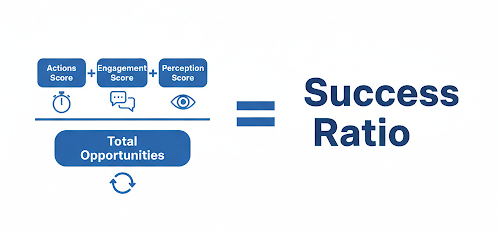
You can do this by calculating a compound success value – essentially a score that blends together different types of interactions. For instance, you might assign higher weight to conversions, medium weight to engagement (likes, comments, shares), and lower weight to impressions or awareness metrics.
Step 3: Calculate ROI
Combine your compound success metrics with campaign costs to measure true brands impact. Include:
- Perception: Awareness metrics like impressions, likes, and deliverability.
- Engagement: Consideration actions such as opens, clicks, and session time.
- Action: Campaign goals like conversions, onboarding, or loyalty.
This gives a clear picture of how each channel contributes to ROI.
By following these steps, you’ll be able to deliver a connected, customer-friendly experience across every channel.
Challenges in Omnichannel Marketing
Even though omnichannel marketing brings huge benefits, it isn’t always easy to implement. Common challenges include:
- Data integration issues:
Customer data often sits in different systems or departments, making it hard to get a full, unified view of each customer. - Maintaining consistency across channels:
Different teams or vendors managing your channels can lead to mixed messaging, inconsistent branding, or outdated offers. - Privacy and data regulations:
With stricter privacy laws like GDPR and evolving data practices, brands must ensure customer data is handled securely and ethically.
Overcoming these challenges requires the right technology, teamwork, and ongoing process improvements.
How EasyInsights Can Help Build Omnichannel Strategies
One of the biggest challenges brands face today is fragmented data. Ads, analytics, CRM, and offline sales data often sit in silos, making it nearly impossible to get a unified view of the customer journey. Without this, true omnichannel marketing can’t exist.
That’s where EasyInsights comes in. Our platform is designed to bridge these gaps and empower marketers to deliver consistent, personalized, and data-driven experiences across every touchpoint. Here’s how we make it possible:
1. Unified Customer Journeys
Instead of juggling data from disconnected platforms, EasyInsights gives you a single, comprehensive view of every customer interaction – from the first ad click to the final purchase and beyond. This visibility allows you to understand where your customers come from, how they interact with different channels, and what ultimately drives them to convert.
2. Advanced Attribution Models
Traditional attribution often credits the last click, undervaluing the earlier touchpoints that shaped the customer’s decision. EasyInsights offers advanced attribution models – including multitouch attribution to assign credit accurately across the entire journey. This means you can invest smarter, optimize campaigns more effectively, and prove the true ROI of your marketing efforts.
3. Seamless Integrations
Omnichannel strategies require smooth data flow between systems. EasyInsights provides out-of-the-box integrations with leading ad platforms (Google, Meta, LinkedIn, and more), analytics tools, CRMs, and offline sources. This eliminates data silos and ensures every channel works together, not in isolation.
4. Actionable Insights in Real-Time
Data is only powerful when it leads to action. EasyInsights delivers real-time insights into campaign performance, customer behavior, and channel effectiveness. With these insights, you can personalize experiences, fine-tune targeting, and optimize campaigns while they’re still running – maximizing impact.
Conclusion
In the end, both omnichannel and multichannel approaches are tools – what makes the difference is how you use them. The real competitive edge lies in your ability to evolve. A brand that starts with multichannel but continuously works toward omnichannel maturity will always stay ahead of shifting customer expectations.
The future of marketing won’t be defined by how many channels you’re on, but by how seamlessly those channels connect to create trust and loyalty. For marketers ready to lead in this future, the move isn’t optional – it’s inevitable. And with platforms like EasyInsights, you don’t just connect your channels – you connect the entire customer journey, turning complexity into clarity and insights into action.
Map your Customer Journey with EasyInsights – Book a demo now
Additional reading – Omnichannel Marketing vs Multichannel Marketing


